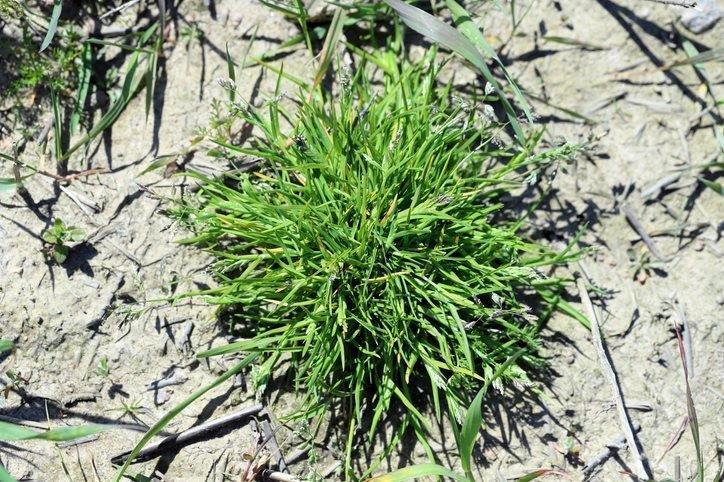Winter Weeds
Author: Stefan Palm Date Posted: 30 May 2023
Winter is the off-season time for most lawns in South Australia. During these dormant times, pests, like weeds, can take hold. Now is when you'll see them emerging and while they're young, now is also an excellent time to attack them!
There is a fair chance that you’re sick of dealing with weeds. That’s because they are relentless! If you love your lawn, you’ve probably been out there during the summer tackling them, then in the Autumn, and here we are again talking about them in the Winter. There is a couple of reasons for that. Firstly, most weeds have a set of conditions that they prefer. Some prefer the heat, and some prefer the cold. Some like wet conditions, and some like dry, so they germinate in waves through the seasons. The second is that they are generally prolific seeders, dropping their seed into the thatch of the lawn to ensure their survival into the future. If you’ve got a serious weed problem, it can often take a trip through each season to get on top of them, but it’s worth it! Once you’ve cleaned out your lawn from living weeds and their seeds, you’ll generally have a good run after that.
With regard to Winter weeds, there are two common types:
- Winter Grass (Poa annua)
- Broadleaf weeds.
There are two different approaches to controlling these two groups of weeds, so I’ll tackle them separately.
Winter Grass
Winter grass, or Poa annua, is a persistent and relentless weed in Australia, particularly in southern Australia.
The word poa means it’s from the bluegrass family, and the word annua means it’s an annual weed. The common name “winter grass” comes from the fact that this weed only comes up in the wintertime. When temperatures get cool enough, winter grass seeds germinate and stay alive until the Spring when it gets too warm to survive. At this point, these weeds die all by themselves.
You’d think that this would make winter grass a relatively insignificant weed, but anyone who has waged war against these little blighters will know that they have a secret weapon to ensure their survival, and that weapon is their seed! Each winter grass weed can produce anywhere from 20 to 100 seeds in its short life. That may not sound significant, but picture this – One winter grass seed germinates in early Winter. It grows, produces 50 seeds and then dies in the Spring, with all of those seeds falling to the ground. The next Winter, those 50 seeds germinate and produce 50 seeds of their own. Now you have 2500 weeds. It doesn’t take long for your lawn to become a sea of winter grass during the Winter.
To tackle this weed now, apply a chemical called David Grays Winter Grass Killer. It contains a chemical called Propyzamide which will selectively control winter grass in couch and buffalo lawns. It does this in two ways:
- By suppressing its ability to produce seed and
- By killing the weed, but only while it’s young before it seeds.
Postemergence control of winter grass like this is not the most effective way to control it. It can be stubborn and doesn’t always respond to chemicals, and when it does, there is always more seed germinating right behind it. A more effective way is pre-emergent control. This is where you prevent the seed from germinating in the first place, but I’ll talk more about that later.
Broadleaf weeds:
Broadleaf weeds will germinate and grow at any time of year, but they love Winter. Like any weed, they germinate small and on mass. This is partly because of the lack of competition from the lawn during these months. If left unchecked, they grow and dominate quickly. The good news is, while they are young, they are easy to control.jpg)
The most common types are:
- Bindi eye
- Creeping oxalis
- Clover
- Chickweed
- Thistle
To tackle these weeds now, apply a chemical such as Amgrow Bin-Die. It contains a chemical called Bromoxymil, which is safer than some of the other broadleaf selective herbicides on the shelf. It can be applied to all lawns, including buffalo. Alternatively, there is another option called Bow and Arrow. This new generation product is faster acting with a mode of action that takes care of relentless weeds like creeping oxalis like nothing else!
When spraying for broad leaf weeds, pick a sunny day for best results and make sure that there is no rain forecasted for 2 days. Ensure that the lawn is dry before applying. You'll more than likely have to apply several applications, so be prepared to apply every three weeks until the weeds disappear.
Pre-emergent control
The secret to long-term weed control is making sure they don’t come back, and the way to do that is with a pre-emergent herbicide. While pre-emergent herbicides don’t kill living weeds, they stop seeds from germinating, which is necessary to break the cycle. Once you have controlled the living weeds in your lawn, apply a pre-emergent herbicide called Spartan. Spartan lasts in the soil for up to 16 weeks. I’d recommend using it four times – once every season. This will give you weed germination coverage for a year.
When it comes to chemicals, always read the label and use it as directed. Never apply multiple chemicals at the same time. If you’d like more information, please give us a call on 8298 0555 or email us at info@paulmunnsinstantlawn.com.au


